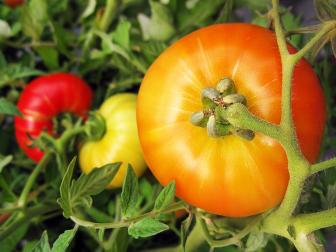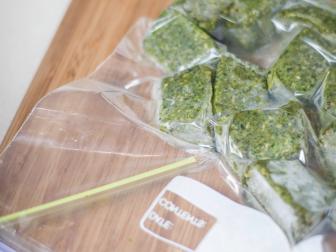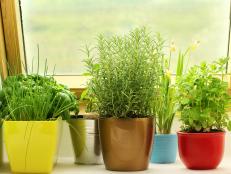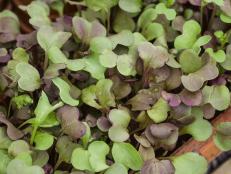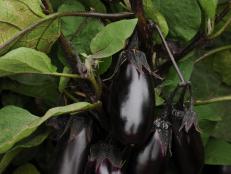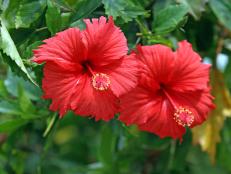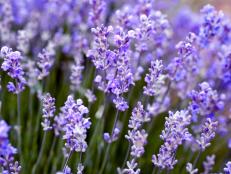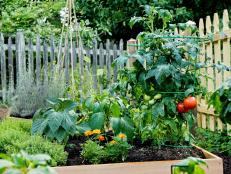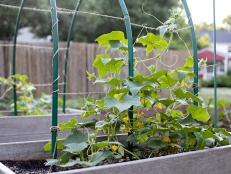Planting, Growing and Harvesting Basil
Learn how to grow and care for basil in your garden. Plus, get tips for harvesting, using and preserving fresh basil.
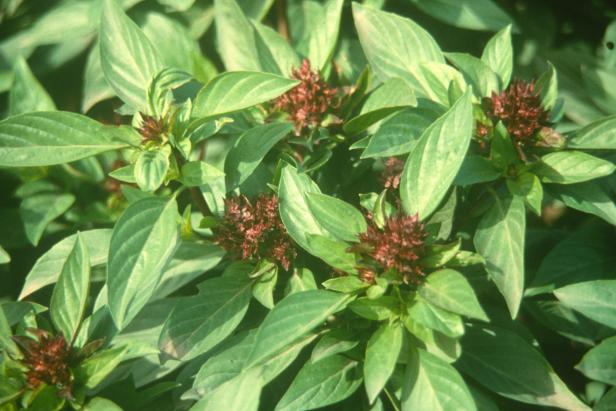
National Garden Bureau
Thai basils are stronger than sweet basils, and this variety, 'Siam Queen', has a licorice flavor. A member of the mint family, fragrant basils are often made into teas thought to sooth upset tummies.
The scent and flavor of basil says "summer" like nothing else, except for perhaps its best friend in the garden and kitchen: tomatoes. Like tomatoes, basil loves warm weather and grows best in the summer. Wait to plant outdoors until temperatures are above 50 degrees.
Basil originated in Southeast Asia and has become central to culinary traditions around the world, including Italy, Greece and the entire Mediterranean region. Basil is in the Mint Family of plants that includes many culinary herbs: mint, oregano, rosemary, sage and thyme, among others.
Popular Basil Varieties
Sweet basil is the classic and most well-known variety of basil, but there are more than 60 different cultivars available. Some are lauded for distinctive flavor or scent, while others are bred for a particular habit or leaf size and shape.

'Pesto Perpetuo' basil has a unique columnar shape, meaning it grows up, not out. It's beautiful in containers. This variety is also non-flowering, so you don't have to worry about pinching back blooms.
Here are some popular varieties to consider growing:
- Sweet basil: Classic basil flavor, ideal for tomato sauces.
- 'Genovese' basil: An Italian variety that some consider the best for making pesto.
- Thai basil: Intense licorice flavor, narrower leaves than Italian varieties, including various cultivars, such as 'Siam Queen.'
- 'Boxwood' basil: Tiny leaves and rounded shape give it the look of a small boxwood plant, ideal for containers.
- 'Large Leaf' basil: Similar in flavor to sweet basil, huge leaves are 3 inches wide, making them ideal for using whole in wraps and with large tomato slices in Caprese salad.
- Columnar basils: Bred to grow up, not out, making it stunning in the center of pots, look for 'Pesto Perpetuo' with variegated leaves, or 'Emerald Towers' with classic basil flavor.
- Scented basils: Several varieties have been bred for distinctive flavors, including lime, lemon and cinnamon.
Planting Basil
When to Plant Basil
Basil is easy to grow in warm weather, but it will be killed by frost and damaged by temperatures below 50 degrees Fahrenheit.

SHAIN RIEVLEY, SHAIN RIEVLEY, SHAIN RIEVLEY
Here, sweet basil is being planted in a vegetable garden bed. Be sure to mulch around plants to avoid having soil splash on leaves. Also, space basil plants where they will get plenty of sunlight and airflow, so don't crowd them.
You can sow it directly outdoors, start seed indoors and transplant when temperatures are right, or plant from transplants available at the garden center. When sowing seed, know that germination rate is relatively low for basil, and don't be discouraged if all your seeds don't come up. You only need a few plants to satisfy your craving for basil all summer.
How to Grow Basil
Watering and Fertilizing
Basil needs regular water but, as with many plants, can develop problems if leaves stay wet. Water at the base of the plant and try not to let the soil get too dry between watering, as basil has shallow roots. Basil is considered a light feeder, and if grown in good garden soil, shouldn't need supplemental fertilizer.
Pinching Basil Flowers
Like all plants grown for the leaves, when basil begins to flower, that means the plant is starting to focus on producing seed, redirecting energy from the leaves to the flower. Leaves will become smaller and more bitter if the plant is allowed to flower.
Pinch back the flowers to keep the plant focused on producing leaves. You can also cut back the growing tip of the plant to prevent it from flowering.
Growing Basil Indoors
You can grow basil indoors on a sunny windowsill. Just make sure your plant gets plenty of sunlight and warmth. If outdoor chill from the window means the temperature near your plant is too low, try using a heat mat to keep the temperature around your indoor basil plant optimal for growth.
Companion Planting With Basil
Basil is an ideal companion plant for tomatoes not only on the plate but also in the garden. In her book Plant Partners, author and entomologist Jessica Walliser shares a study proving that basil deters thrips, which can spread various diseases to tomatoes. Basil is also known to put off flies from a variety of vegetable plants, making it a general good companion for all vegetables.
How to Plant, Grow and Care for Tomatoes
Consider this your ultimate guide to choosing tomato plants, planting, growing and caring for tomatoes, and harvesting the best-tasting tomatoes ever.
Here is a short, non-exhaustive, list of vegetables that may benefit from being planted alongside basil:
Problems With Basil
Basil grows relatively easily but can encounter a few problems.
Yellow Leaves
Yellowing leaves can be a sign of too much water, too little nitrogen or a fungal issue. If plants look otherwise healthy, try fertilizing them and making sure they're not being overwatered.
Black Spots on Leaves
Black or brown spots on leaves and streaks on the plant stems could be bacterial leaf spot. This is caused when infected soil splashes up on plants. Make sure plants aren't crowded and have plenty of air circulation. Mulch the soil around plants to prevent soil splashing.
How to Harvest Basil
When harvesting your basil, avoid snipping leaf by leaf, and instead harvest portions of the stems with leaves attached. Try to let stems grow several sets of leaves before starting to cut on them.
Snip a side stem just above the second set of leaves coming from the main stem; this allows the side stem to regrow new sets of leaves and keeps a good shape on the plant. Strip or pinch leaves from the detached stem for use in the kitchen.
Preserving Basil
One of the best ways to preserve basil is by making pesto and then freezing it, either in zipper freezer bags or in ice cube trays for individual servings. You can also dry basil, though it loses some flavor in the process.
How to Freeze Pesto 6 Photos
These easy steps for making frozen pesto cubes will help you preserve your basil harvest in the months to come.
Basil Recipes from Food Network
Get Food Network's best basil recipes — from a classic pesto to an herbaceous cocktail.








